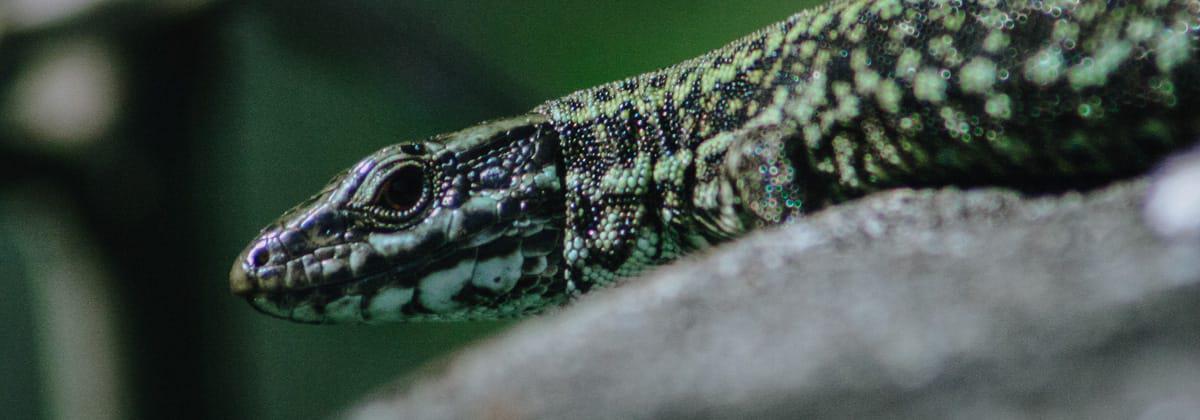
Modernization
Learn more about government’s intention to modernize the museum to protect our historic holdings and provide better access to our collections.

Research interests
I have two main research directions at the moment: the documentation of our changing marine fish diversity, and the documentation of the role of the pet trade, angling (bait) industry and grocery stores as sources of exotic and invasive animals in British Columbia.
Since 2004, we have documented accidental importation of amphibians and reptiles in BC, including a salamander (Batrachoceps sp.) and Pacific chorus frog (Pseudacris regilla) shipped in fresh produce, brown anole (Anolis sagrei) eggs imported in potted plants, and five unidentified geckos at CFB Comox in a crate from Hawaii. We also have documented a firebelly toad (Bombina orientalis), corn snakes (Pantherophis guttatus), a yellow rat snake (Pantherophis alleghaniensis), a spotted python (Antaresia maculosa), ball pythons (Python regius), a Burmese python (P. molurus), a boa constrictor (Constrictor constrictor), two bearded dragons (Pogona vitticeps), a green iguana (Iguana iguana), a spiny softshell turtle (Apalone spinifera), a peninsula cooter (Pseudemys peninsularis), map turtles (Graptemys sp.), common snapping turtles (Chelydra serpentina), two box turtles (Terrepene sp.), and many red-eared and yellowbelly sliders (Trachemys scripta) loose in BC. So far, with the exception of the red-eared sliders, most of these pets were intercepted and removed from the wild or died without reproducing.
To counter the invasive species threat, the British Columbia government has put together a team(the Inter-ministry Invasive Species Working Group , or IMISWG) to identify invaders and react quickly to eliminate introduced species where they appear. This Research Portal project supports government objectives by documenting where exotic reptiles and amphibians have appeared and assists with species identification. Information on establishment, routes of introduction and potential for spread can then be used as a guide to determine which species represent an unacceptable risk to this province.
This project draws on specimens already held by Royal BC Museum to document historic introductions in this province and builds on publications produced by the Royal BC Museum and externally published peer-reviewed research (see below) to maintain a current list of reptile and amphibian species appearing in our province.
American bullfrogs (Lithobates catesbeiana) and green frogs (L. clamitans), thought to have been released after a culinary market failed, and the common wall lizard (Podarcis muralis), intentionally released in 1967, were the only exotic reptiles and amphibians known to reproduce in the wild in BC until a few years ago. All three species are hardy and can tolerate cold winters in their native ranges, so they had no problem adapting to the conditions in southwestern British Columbia. But with the discovery of a successful nest of red-eared turtles (Trachemys scripta) at the Reifel Bird Sanctuary in Delta in 2015, we now have evidence of a species from a warmer climate adapting to a relatively cool BC climate. With future climate change and increasing average temperatures, it is possible that many more exotic species could gain a toe-hold and successfully breed here. For example, the Italian wall lizard (P. siculus), which is established on Orcas Island, represents a significant threat to the region and could spread as fast as its relative, the common wall lizard. A single Italian wall lizard appeared in Vancouver in 2019, and we are uncertain how it arrived in Canada. It is important to document these species as they arrive to understand the frequency of importation and the routes of dispersal, to develop strategies to limit future arrivals. There now is a sizable online presence (links listed below) drawing people to the research and to the Royal BC Museum. The museum is now also part of a project documenting the range of wall lizards in North America, and reptile and amphibian ranges in British Columbia through the global online network iNaturalist. Using iNaturalist, I review global records of exotic amphibians and reptiles in British Columbia to make sure information online is accurate. And as a member of IMISWG, I am linked with government biologists to make sure that newly discovered specimens are correctly identified and preserved at the museum. Furthermore, with my background in the pet trade, I assist in the refinement of British Columbia’s list of prohibited species and help guide future policy regarding exotic species in the province. In addition to iNaturalist records, new species will be documented as they arrive using traditional methods (peer-reviewed publications), and we will add these combined records to a future revision of the Royal BC Museum Handbook Amphibians and Reptiles of British Columbia. The online and traditionally published books and research papers ensure this research will be available to as large an audience as possible.
| Article | Author |
|---|---|
| “A Second Wall Lizard Species in British Columbia.” Victoria Natural History Society Newsletter, 2020. | Hanke, G. |
| “First Record of an Italian Wall Lizard (Podarcis siculus) in British Columbia, Canada.” Canadian Field-Naturalist. | Hanke, G., and G. Deichsel. i. |
| “Interspecific Scent Recognition Between Native Lizards and Invading Wall Lizard (Podarcis muralis): Implications for Competitive Interactions and Invasion Impacts.” Animal Behaviour. | Williams, R.J., A.M. Dunn, G.F. Hanke, J.W. Dixon, and C. Hassall. |
| “Recent Rapid Expansion of European Wall Lizards (Podarcis muralis) in British Columbia, Canada.” Northwestern Naturalist 101, no. 1 (2020): 50–55. | Engelstoft, C., J. Robinson, D. Fraser and G. Hanke. |
| “Amphibians and Reptiles of the Victoria Region.” In The Naturalist’s Guide to the Victoria Region, edited by A. Nightingale and C. Copley (Victoria: Royal BC Museum, 2012), 197–212. | Hanke, G.F. |
| “Trachemys scripta scripta.” Herpetological Review, 39 no. 2 (2008): 237 | Hanke, G.F |